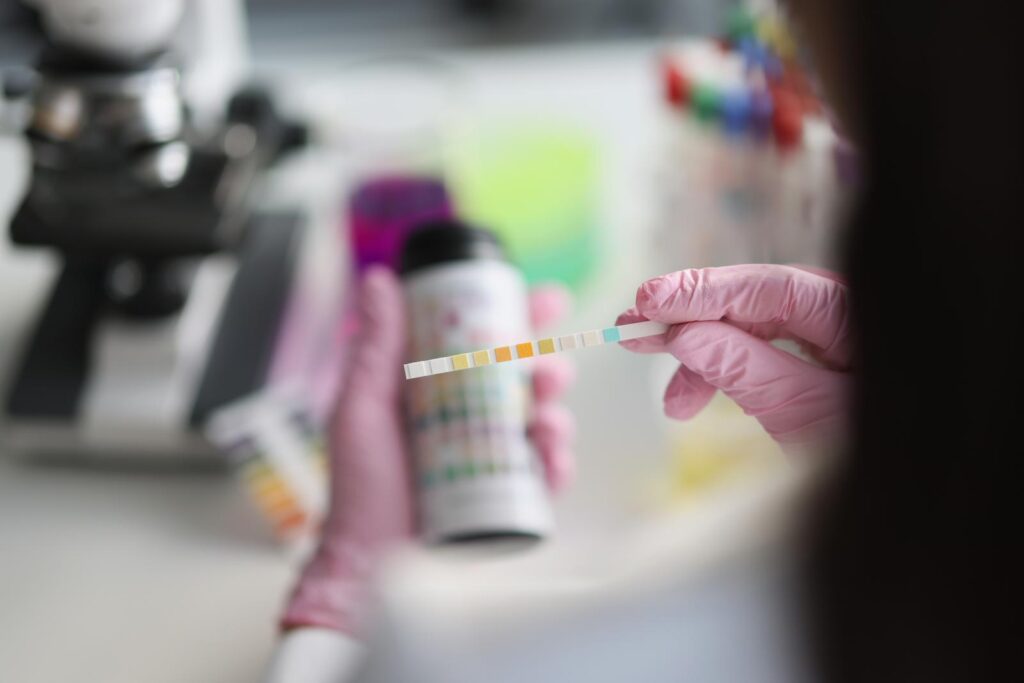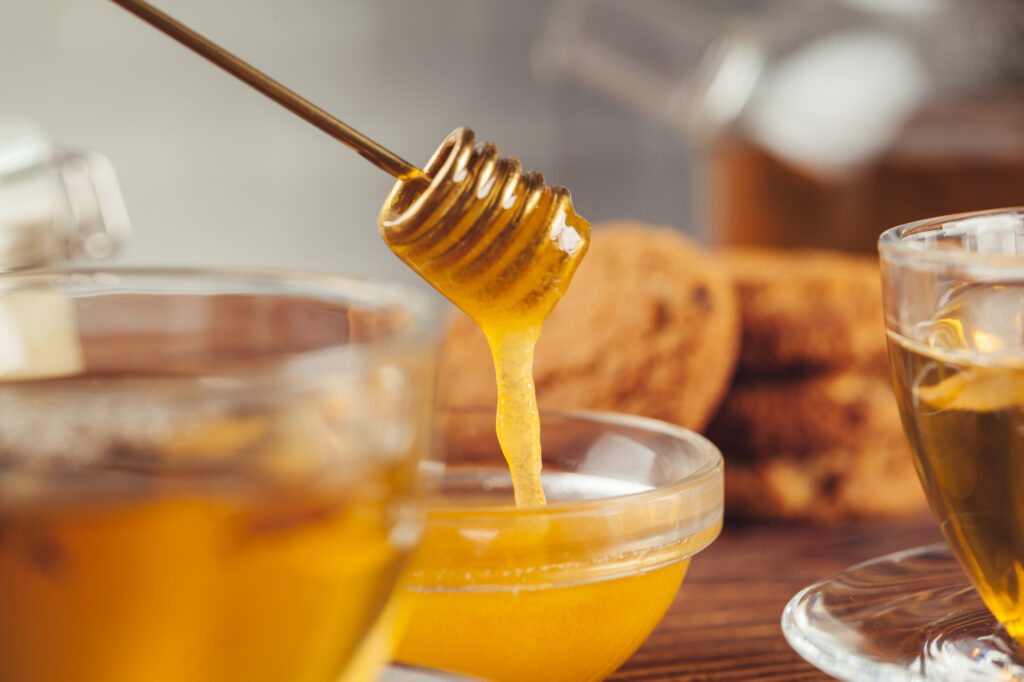A common question that people ask is: “What is the pH of Honey?” Well, I’m about to answer that for you.
Honey is one of the most versatile historical, economic, medicinal, and flavorful substances on the planet. Though much has been written about honey, little is known about its pH level. Honey’s acidity or alkalinity plays a huge role in how it tastes and how it is used in the food industry. So how does honey rank on the pH scale?
The pH of honey is a subject that comes up often in beekeeping forums, with mixed opinions and inaccurate information. There are claims that honey should be acidic due to the fact that bees produce honey from nectar.
Yet other sources claim honey’s pH is non-acidic because of its antibacterial properties. Therefore in this blog post, we will clear up any confusion and give you all the answers that need to know about the pH of honey and whether it is acidic or alkaline!
What is pH value?
pH stands for the potential of hydrogen. The pH of any solution indicates whether it is acidic or alkaline. The pH scale ranges from 0 to 14:
0-6.9 = acidic
7.1-14 = alkaline
7 is neutral
A pH value lower than 7 indicates an acidic solution and a pH value greater than 7 indicates an alkaline solution. The most common way to measure pH is using test strips that change color when dipped into water and matched against a chart.
The pH of pure water is 7, which means it lies at the center of the pH scale and it is a neutral solution. Moreover, if the solution goes lower than 7 like on 3 or 2 then it is a strong acid.
For example, lemon has a pH of about 2 (or lower) and household lye has a pH of 13 (or higher). Moreover, there is no pH of oil because only liquids with high water content have a pH value. So since honey has like 20% of water content present in it it has a pH value to it.
What is the pH of honey?
Honey is acidic, but not as acidic as you might think. Honey has a pH between 3.2 and 4.5 depending on the type of honey and the processing it has undergone. This is because some of the acids in honey are converted into other substances during processing, leaving a more neutral product.
The average pH for honey is around 3.9, which means that it is somewhat acidic but not nearly as acidic as many people believe it to be. The acidity of honey depends on its floral source, with those made from heather or buckwheat being more acidic than those made from clover or citrus blossoms.
Moreover, the pH of honey is one of the main reasons why it has been used as a medicine for thousands of years. Honey can be used topically to help heal wounds, as well as being taken internally in small doses to help with allergies, coughs, and colds.
Why is honey considered acidic?
Honey is considered acidic, but the acidity isn’t due to the presence of acids. The acidity comes from hydrogen ions (H+) that are produced when glucose molecules in honey break down over time.
These H+ ions combine with other elements in honey to form salts that give it its characteristic taste and color. The combination of all these elements makes honey unique and complex, which is why some people say it’s “liquid gold.”
Honey’s acidity doesn’t make it harmful to healthy people, in fact, it’s actually good for you! It can help prevent tooth decay because it contains fructose, glucose, and minerals such as calcium which promote the growth of healthy bacteria in our mouths.
Acids found in pure honey
Honey is an amazing substance. However, it contains different acids. Let’s take a look at the different kinds of acids found in honey and how they affect your body:
Gluconic acid
Gluconic acid is produced by bees from glucose in nectar and It has a sour taste which makes it good for use as an antioxidant in foods. It has the chemical formula C6H12O6. Glucose is an important part of metabolism for humans and animals. It also serves as a source of energy for plants via photosynthesis, with water as its byproduct.
Glucose can exist in two forms: an open chain form or ring form (furanose). The open chain form of glucose contains six carbon atoms in a linear arrangement; it is this form that occurs naturally in honey as well as most commercial sweeteners such as corn syrup and brown sugar made from beets or sugar cane juice which are derived from cornstarch (which contains mostly glucose).
Acetic acid
Acetic acid is a dilute acid. It is also called glacial acetic acid and ethanoic acid. This type of acid can occur naturally in honey as well as in fruits and vegetables, including apples, grapes, tomatoes, lemons, and limes. Acetic acid is also used to make vinegar from alcohol (ethanol).
Lactic acid
Lactic acid is a natural by-product of fermentation. It is a natural preservative found in many foods, including honey. It is also produced by the body during exercise and other activities. Lactic acid is made from lactose, the sugar found in honey.
Besides that, lactic acid can be used as a food preservative because it inhibits the growth of some bacteria and fungi. It also has a sour taste that helps mask the flavor of spoiled food.
Citric acid
Citric acid is a type of weak, water-soluble organic acid that occurs naturally. It is produced by many different types of plants, including citrus fruits. It is used as a food preservative and flavoring agent in many foods and beverages.
The amount of citric acid in honey varies depending on the type of honey. For example, buckwheat honey has less than 0.1 percent citric acid while orange blossom honey has more than 0.5 percent citric acid.
pH of different types of honey
Different types of honey have varying pH values due to the source of their nectar. So, here are the pH values of some honey.
Manuka honey
The pH value of manuka honey ranges from 3.2 to 4.6 which is quite lower when compared to other types of honey. This low pH range is beneficial for non-chronological wound healing.
Acacia honey
Acacia honey pH value ranges from 3.5 to 3.9 which is the lowest among all the honey types. This pH value gives Acacia honey the property to resist microbial spoilage pretty effectively.
Chestnut honey
Chestnut honey pH value ranges from 4.5 to 4.9 nicely balanced between high and low acidic types.
Eucalyptus honey
The pH of Eucalyptus honey is between 3.8 and 4.5. The acidic nature of the honey helps it to remain stable and resist bacterial growth.
Dandelion honey
The pH value of dandelion honey is around 4.5 to 5.5, which is slightly acidic. It is a bit higher than the average pH of honey.
Orange blossom honey
The pH of Orange blossom honey is between 5.5 and 6.5.
What does ph of honey mean for your health?
Honey’s acidity may make you think it isn’t something you should be putting into your body, after all, we’ve all heard that high-acid foods like citrus fruits can erode tooth enamel over time but there are actually no problems associated with honey’s low pH levels which makes it an excellent choice when consumed in moderation (about one tablespoon per day).
Besides that, the kidney also has a strong defense against acids and bases and aids in their absorption into the bloodstream.
Can you measure the pH of honey?
Yes, The best way to measure the pH of honey is by using a pH meter or test strips. These tools are very accurate and can be used by anyone who wants to measure their honey’s acidity accurately.
Using a pH Meter
A pH meter is a small electronic device that measures the acidity (pH) of solutions by passing an electrical current through them. The lower the solution’s pH value, the more acidic it is, so a solution with an acidic pH (such as honey) may have low detectable voltage when measured with an electrode connected to an electrode cable connected to an electronic meter.
A high-pH solution might have high voltage when measured with an electrode connected to an electrode cable connected to an electronic meter.
A digital pH meter costs between $40-$200 and can be purchased online or at your local hardware store. Once purchased, it will last for a pretty long time and will give you accurate results during your honey tests.
Using a pH test strips
A pH test strip is a small, paper-like strip with a color chart at the end. You use it to test the acidity or alkalinity (pH) of a solution. The color change indicates the solution’s pH value. The more acidic the honey is, the greater the number of colors that appear on the chart.
How Does Honey Become Alkaline?
After ingestion, honey becomes alkaline inside the body. The amount of alkalinity depends on how much sugar is present in the raw honey and how much glucose has been converted into fructose by enzymes in the gut wall during the digestion process.
Glucose is an essential carbohydrate that provides energy for every cell in our body while fructose acts as a sweetener and helps prevent tooth decay. The higher the level of glucose compared to fructose, the more alkaline the honey will be after ingestion because more glucose means more alkalinity in your body and vice versa.
Our verdict
The pH of honey is a complex topic, but one that can be understood with a little research and experimentation. The takeaway from this article should be that honey is not just sweet it’s also acidic!
This means that when you take an excessive amount of it internally, it may affect your gut health in ways that you don’t expect. If you’re struggling with digestive problems like constipation or diarrhea, talk to your doctor about how honey might help.


